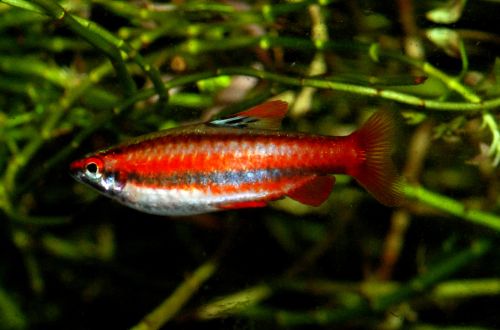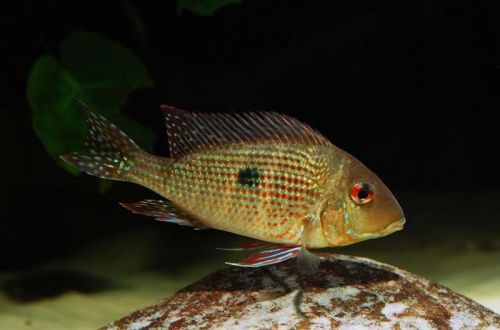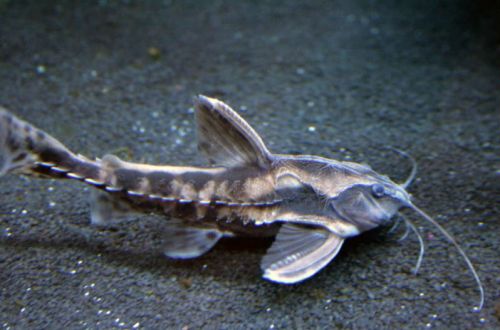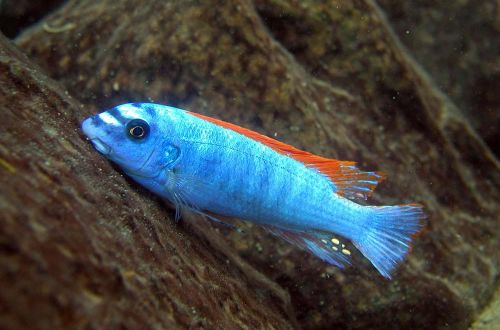
Red nannostomus
Red nannostomus, scientific name Nannostomus mortenthaleri, belongs to the Lebiasinidae family, another common name for Coral Red Pencilfish is a free translation – “Pencil fish the color of red coral.” This is one of the most beautiful species of Kharatsin, and discovered relatively recently. The fish received a scientific description only in 2001, despite this, it has already gained wide popularity among aquarists around the world. Currently, most of the fish for sale are caught in the wild, which causes difficulties in adaptation.

This species got its name in honor of Martin Motenheyler (Martin Mortenthaler), the owner of an Australian company engaged in the export of aquarium tropical fish to markets around the world. It was he who first proposed designating this fish as a separate independent species.
Contents
Habitat
The red nannostomus inhabits a relatively small area in the basins of the Nanay and Rio Tigre rivers (Peru, South America), at present it is still a wild and rather inaccessible corner of nature. The fish prefers small forest streams and channels with clear water.
Description
The already elongated slender body is emphasized by horizontal black lines stretching from head to tail. The predominant color is red, the abdomen is paler, often has a light pink tint closer to white.
Food
Fish are not picky about food, they will be happy to consume all types of dry industrial feed (flakes, granules) and meat products (frozen, freeze-dried, live). The optimal diet is as follows: ground flakes or granules, served 2-3 times daily, about a day later you can serve small bloodworms (live or freeze-dried) or pieces of worms, shrimp.
Maintenance and care
The main difficulty lies in establishing and maintaining the necessary water parameters (pH, dGH, temperature), any deviations immediately cause health problems. An effective way to maintain the acidity of water is to use a filter with a peat-based filter element, the hardness level is set at the stage of water treatment, the temperature is controlled by a heater. From other equipment – an aerator and a lighting system that provides a weak light output, since the fish prefer subdued lighting.
Floating plants are required in the design, creating additional shade. Other plants are located in groups along the walls of the aquarium. The soil is dark with decorative elements in the form of snags, woven roots and other elements, which is an excellent hiding place for fish.
Friendly and active species, gets along well with other peaceful small schooling fish. There will be problems with larger neighbors, Red nannostomus can become their prey, and also will not be able to compete for food, being afraid to approach the feeder.
Keeping a flock of at least 6 individuals. Within the species, there is rivalry between males for the attention of females, which manifests itself in constant skirmishes, but they rarely lead to serious injuries. However, poor adaptation to the artificial environment of the aquarium can aggravate even minor injuries and provoke disease. Therefore, it is recommended to keep one male and a group of females so that he is in good shape, he can be deceived by placing a mirror in the aquarium, which will be perceived as a rival.
Sexual differences
Males are distinguished by the presence of a white spot at the base of the dorsal fin, as well as the rich red color of the outer edge of the anal fin, in females it is noticeably paler. Differences are also observed in behavior, females are calm, and males constantly arrange skirmishes, in addition, during spawning, their coloring is significantly enhanced.
Breeding / breeding
Although the fish has been successfully bred in captivity, it has only been successful in commercial hatcheries and not in home aquaria. Currently, the majority of retail fish are still wild caught.
Diseases
Red nannostomus is prone to infection with protozoa, especially at the stage of acclimatization, and health problems also arise when water parameters change sharply or the permissible levels are exceeded. Read more about symptoms and treatments in the Aquarium Fish Diseases section.





